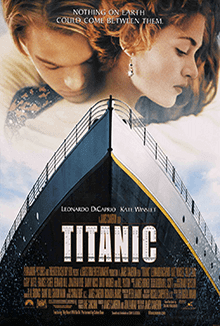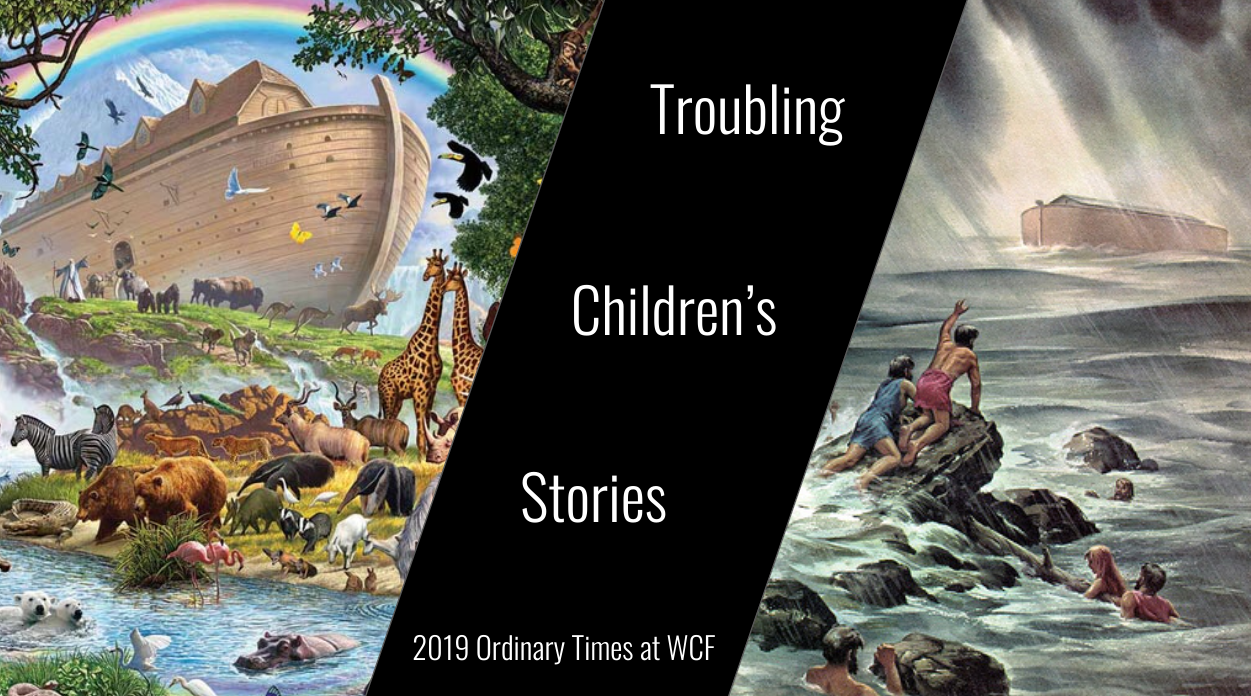
I’d like to take this morning to try and give you my take on why I think it’s important that we revisit these stories. Many of us are very familiar with these epic tales. David and Goliath, Adam and Eve, Jonah and the Whale, Daniel and the Lion’s Den, Noah’s Ark. Many of them have been made into picture books and even movies! And any Children’s Bible is sure to have these great adventures included. This morning I want to talk about why many of these renditions have left us with a very incomplete and sometimes terribly inaccurate picture of what these stories are all about. To do this first, we’re going to look at an example from pop-culture and investigate how the grown-up version is different than the kid-version. Second, we’re going to look at how trying to come up with a one-sentence “moral of the story” can leave us with a message that is quite different than the one that we get when we see the whole picture.
So I want to take an example from pop culture, a story that we all know, and work it backwards. Rather than starting with the kids’ version and adding in all of the details, I want to start with the adult version and try to simplify it into a children’s story. By doing this I’m hoping we can see just want is LOST when we simplify and pare down these amazingly complex and meaningful stories.
It was actually pretty hard to think of a pop-culture, adult story that we’d all know, but I landed on The Titanic movie. This is a pretty epic love story that takes place on the fated maiden voyage of this notorious ship. I’m REALLY hoping you’ve all seen the movie but we’re going to do a quick recap before we move on.
[Titanic recap - people read]
Now, let’s rewrite that story in a way that is appropriate for kids.
[go through each number and re-write it for kids]
There is a lot missing in this version of the story. It is quite an adventure but there’s a lot missing. There are a lot of layers of complexity and subtlety that make this movie really compelling and those layers are lost when we simplify it to make it easy for kids to understand. The same thing happens when we have only our children’s story version of these old testament tales.
There are two main aspects that I want to emphasize for our purposes this morning. First, the Titanic movie takes place in a really interesting historical context - this ship carried the dreams of a generation. And as viewers of the movie, we know that the ship is going to sink. When you simplify the story for kids they don’t know this and the rest of the historical context.
Also, the movie addresses class and cultural differences - it shows the wealthy passengers riding in “first class” and others riding in third class, down below deck. It shows Cal and Rose and her mother and the power and privilege that they enjoy, and Jack and his peers and the different culture that they are a part of. And then it shows what happens when these two cultures collide.
These details add a lot of richness and meaning to the story, and this is lost when you try to simplify the story for children. I won’t go on but I hope you get the idea. When we take a multi-faceted, complex story and rewrite it for children we lose a lot of the meaning and richness.
Now looking back at the bible stories, we can see the same thing happening. Adam and Eve, Noah’s Ark, Jonah and the Whale, David and Goliath, Daniel in the Lion’s Den, Samson and Delilah and so many others. For many of us the children’s picture book version of the story is as far as our understanding goes. But every one of these stories has so many more layers and a lot more depth than any flannelgraph can ever show. They each have a historical context just like The Titanic. They take place during a particular moment in history and there is a lot going on in the background that can’t be shown in cute pictures. And, just like the Titanic these stories involve differences between cultures and classes, the rich and the poor and power imbalance. And, like The Titanic, these stories often include sex, violence and a lot of people dying. These complex layers make these Bible stories meaningful, deep and fascinating. But they can also make these Bible stories complicated and confusing, even for adults! Trying to explain the historical context or family dynamics to adults is pretty ambitious, and explaining them to kids is a challenge that most people don’t even try to tackle. When I learned these stories as a kid, the grown-ups skipped over all of these details and simplified the story to the point where we were left with only a few characters with tea towels on their heads wearing bathrobes.
So, like the Titanic Movie, when these bible stories are over-simplified for children we miss out on a lot. This is one reason why we need to revisit them!
My second reason to revisit these troubling children’s stories is because not only do we get an incomplete picture of these stories on the flannelgraph, but we get an inaccurate one. The message that is communicated may not be what the story was really all about.
So, the one thing that our Sunday school stories had that the Titanic doesn’t, is a MORAL. Or if there is a moral to that story I don’t want to think about it right now…Each of you has a story name - what do you think is the kids’ book moral of the story? In one sentence.
Noah’s Ark (If you listen to God he won’t kill you)
David and Goliath (God will help you kill the bad guy)
Jonah and the whale (God’s will is undefyable)
Daniel in the Lion’s Den (God will protect)
Joseph and the Colourful Coat (?)
Baby Moses (God will protect)
We could go on and we’re obviously oversimplifying to make these sound ridiculous. But these one-sentence lessons are created to fit at the bottom of a colouring page, or on a poster in a Sunday School classroom. They don’t capture the deep and rich messages of the Bible. When we try to condense these adult stories into kid stories, we may actually change the message. This is another reason why I think it’s important for us to come back and revisit them from a grown up perspective.
So before we start discussion I just want to share one last point. One of the reasons why I haven’t taught my kids bible stories is because I honestly think it is dangerous. Again, I’m just going from my experience, and what I know of the journeys of my peers, who also grew up in church.
What I want to add is this: Those adorable little kids with tea towels on their heads grow up. For some, growing up means we start to realize that God won’t actually spare us from being killed by lions like Daniel and in fact, God won’t even protect us from the bullies at school. God won’t help us kill the bad guys like David and following God’s rules like Noah, doesn’t mean we won’t have to face the flood. So we may ask, if the lessons we were taught as children don’t hold up as adults, does the bible itself hold up? What does that say about the people who were teaching us those lessons? Or the church itself? For some, growing up means that the strong foundation our parents and teachers were trying to build begins to crack and even crumble. The truths we’ve held on to since we were little begin to seem like a bad Halmark card that has nothing to offer in the face of the hard realities of being an adult. So we conclude that the bible is full of platitudes and cliches and that the church is full of hypocrites and we walk away. That’s one way of growing up.
For others, growing up means holding even tighter to the moral of the story. These adults continue to believe that God will kill the bad guy, God will protect us from the lions, and if we follow the rules, we will be among the people in the ark instead of the ones in the water. These are just a few examples but this way of thinking troubles me a lot. This troubles me because when we are counting on God to deal with the bad guys, the bullies, the systems of oppression that keep people in poverty, we don’t take responsibility for dealing with them ourselves. And when we think that we’re on the ark because we follow the rules, we create insiders and outsiders, we look down on people who aren’t in the ark, and we don’t take responsibility, or even stop to think about those people who are in the water.
I am confident that these age-old stories have a LOT to teach us. If we stick with the flannelgraph and the colouring pages we will get a sadly incomplete and dangerously inaccurate picture and miss out on so much of the meaning and insight. I am looking forward to relearning these stories together and digging deep to reveal the grown-up truths that are waiting there for us.


 RSS Feed
RSS Feed

